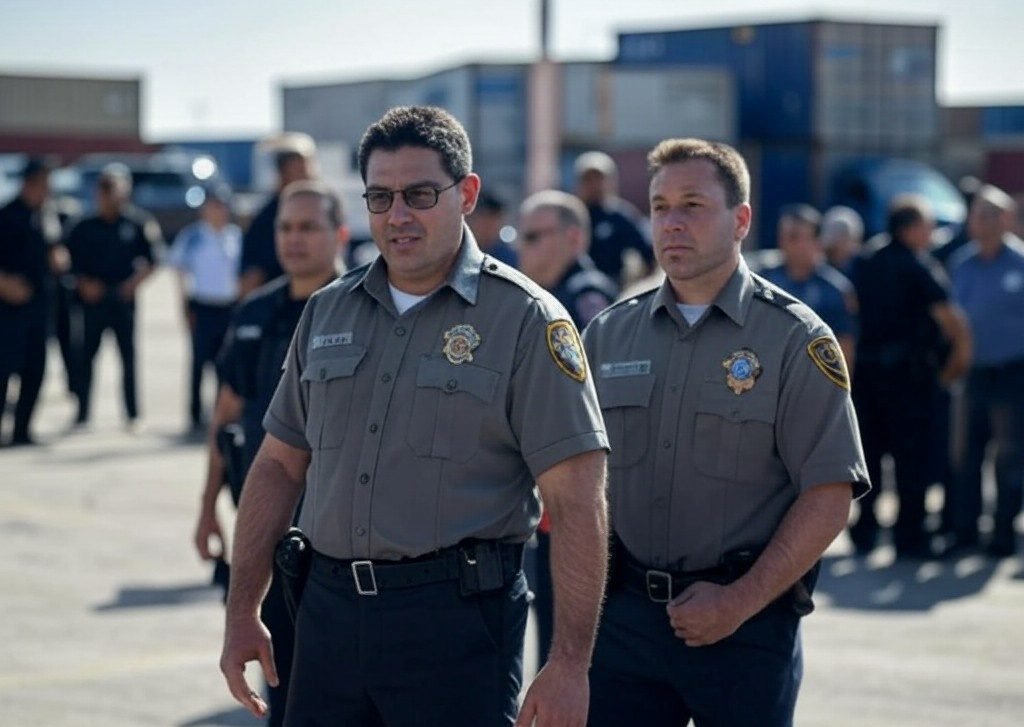Major Cocaine Seizure at Laredo Port: A Look into Border Security Efforts
In a significant operation highlighting the ongoing battle against drug trafficking, U.S. Customs and Border Protection (CBP) recently seized over 54 pounds of cocaine at the Laredo Port of Entry. This seizure, valued at more than $721,000, underscores the continuous efforts by law enforcement agencies to keep illicit drugs off the streets and ensure community safety.
Details of the Seizure
On January 15, 2023, during a routine inspection at the Juarez-Lincoln Bridge, a 54-year-old driver operating a 2017 Ford Explorer was referred for a secondary inspection due to suspicious behavior. Officers employed both canine units and non-intrusive inspection systems, which ultimately led to the discovery of a staggering 54.01 pounds of alleged cocaine concealed within the vehicle.
The street value of the seized cocaine is approximately $721,182, a significant amount that could potentially harm countless lives if distributed. “CBP is proud of the work our frontline officers do to ensure the safety and wellbeing of our communities,” stated Alberto Flores, the Port Director at the Laredo Port of Entry. “This cocaine seizure is an example of ongoing operational efforts conducted daily to protect our borders.”
The Role of U.S. Customs and Border Protection
CBP plays a crucial role in safeguarding the United States from various threats, including drug trafficking. As part of their mission, they employ advanced technology and skilled personnel to detect and intercept illegal drugs entering the country. The agency’s efforts are vital not only in seizing narcotics but also in dismantling the networks that transport these substances across borders.
The use of canine units is a critical component of CBP’s strategy. These specially trained dogs can detect narcotics with remarkable precision, often leading to significant drug busts. In the Laredo case, the canine team’s involvement was instrumental in uncovering the hidden cocaine, showcasing the effectiveness of this approach.
Impact of Drug Trafficking
The implications of drug trafficking extend far beyond the immediate seizure of narcotics. The distribution of illegal drugs contributes to a range of social and health issues, including addiction, crime, and violence. Communities affected by drug abuse often face increased rates of crime and a burdened healthcare system. By intercepting drugs at the border, CBP not only prevents these substances from reaching vulnerable populations but also plays a part in reducing the overall impact of drug-related crime.
Moreover, large drug seizures like this one can disrupt the operations of drug trafficking organizations, sending a message that law enforcement is vigilant and effective in combating these illicit activities. The arrest of the driver in this case will likely lead to further investigations by Homeland Security Investigations (HSI), which specializes in tackling complex criminal organizations involved in drug trafficking.
The Bigger Picture: Border Security Challenges
Despite the success of these operations, the challenges faced by border security agencies remain significant. The increasing sophistication of drug trafficking organizations demands that law enforcement continually adapt and enhance their strategies. Smugglers often employ advanced methods, utilizing hidden compartments in vehicles, drones, and even tunnels to transport drugs across the border.
CBP is aware of these evolving tactics and invests in training and technology to stay one step ahead. The integration of non-intrusive inspection systems, for example, allows officers to examine vehicles without the need for extensive physical searches, speeding up the inspection process while maintaining security.
Community Involvement and Awareness
In addition to law enforcement efforts, community involvement plays a crucial role in combating drug trafficking. Public awareness campaigns can inform citizens about the dangers of drug use and the signs of trafficking in their communities. Educating the public can lead to increased vigilance and reporting of suspicious activities, ultimately aiding law enforcement in their efforts.
Local organizations and schools can also partner with law enforcement to provide resources and support for individuals struggling with addiction. By addressing the root causes of drug abuse and providing necessary services, communities can work towards reducing the demand for illicit drugs.
Conclusion
The recent seizure of over 54 pounds of cocaine at the Laredo Port of Entry is a testament to the diligence and effectiveness of U.S. Customs and Border Protection in their fight against drug trafficking. While the immediate impact of such seizures is clear, the broader implications on community safety and public health are equally significant. As drug trafficking organizations continue to evolve, the collaboration between law enforcement and communities will be essential in fostering a safer environment for all. The ongoing commitment to border security and drug prevention initiatives will play a crucial role in shaping the future of drug trafficking in the United States.






